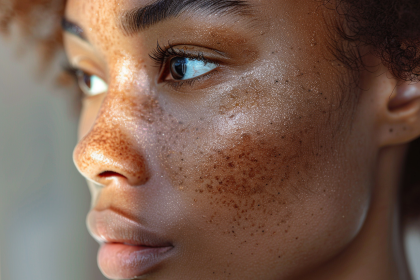The transformation of vibrant hair to silvery strands represents one of nature’s most intriguing biological processes. This remarkable journey begins deep within the hair follicles, where specialized cells work tirelessly to maintain hair color throughout our lives. As these cellular factories gradually slow their production, they unveil the striking silver tones that characterize mature hair.
Understanding the color factory within your hair
At the heart of hair pigmentation lies melanin, the remarkable compound responsible for giving our hair its distinctive color. Produced by specialized cells called melanocytes, melanin comes in two primary forms: eumelanin, which creates brown and black pigments, and pheomelanin, responsible for red and blonde shades. These pigments combine in varying proportions to create the vast spectrum of natural hair colors observed in humans.
The cellular dance of pigmentation
Melanocytes don’t work alone in this intricate process. They partner with hair follicle cells, orchestrating a complex biological dance that determines hair color. During hair growth, melanocytes transfer melanin to keratinocytes, the cells that form the hair shaft. This transfer occurs through a fascinating process called melanin unit transfer, where pigment-containing packages are delivered to growing hair cells.
When time affects the color factory
As we age, several changes occur within the hair follicles that contribute to the silvering process. The melanocytes gradually become less efficient at producing melanin, and some may stop functioning altogether. This decline isn’t uniform across all hair follicles, which explains why some areas of hair turn gray while others retain their original color. The process typically begins with a reduction in melanin production, leading to lighter shades before eventually resulting in white hair.
The genetic blueprint of silver strands
Our genes play a crucial role in determining when and how quickly our hair turns silver. Scientific research has identified several genes involved in the timing of hair graying, including IRF4, which helps regulate melanin production. These genetic factors explain why some people begin to notice silver strands in their twenties while others maintain their natural color well into their fifties or beyond.
Environmental influences on hair color
While genetics set the stage for when hair begins to turn silver, environmental factors can significantly impact this timeline. Oxidative stress, caused by factors such as pollution, UV radiation, and certain lifestyle choices, can accelerate the graying process by damaging melanocytes and disrupting melanin production. This explains why smokers often experience premature graying compared to non-smokers.
The stress factor in hair color change
Recent scientific research has revealed fascinating insights into the relationship between stress and hair graying. Chronic stress can affect the melanocyte stem cells responsible for maintaining the population of melanin-producing cells. When these stem cells become depleted, the affected hair follicles can no longer produce pigmented hair, resulting in silver strands.
Nutrition’s role in maintaining hair color
The food we eat can influence the health of our hair follicles and their ability to produce pigment. Essential nutrients such as vitamin B12, folate, copper, and vitamin D play crucial roles in melanin production and overall hair health. A deficiency in these nutrients may contribute to premature graying, highlighting the importance of a balanced diet in maintaining natural hair color.
Medical conditions affecting hair pigmentation
Several medical conditions can influence the graying process. Autoimmune disorders, thyroid problems, and vitiligo can all affect melanin production and lead to premature graying. Understanding these medical connections helps healthcare providers better diagnose and treat underlying conditions that may be contributing to unexpected hair color changes.
The reversibility question
One of the most intriguing aspects of hair graying is the question of reversibility. While the natural graying process is generally considered permanent, some research suggests that addressing underlying nutritional deficiencies or health conditions may help restore some hair color in certain cases. However, these instances are relatively rare and typically occur only when the graying is caused by reversible factors rather than natural aging.
Embracing the silver transition
The emergence of silver hair represents more than just a cosmetic change; it marks a natural milestone in our biological journey. While society has traditionally viewed gray hair through the lens of aging, many people now celebrate their silver strands as a symbol of wisdom and authenticity. This shift in perspective has led to the “silver revolution,” where individuals proudly showcase their natural hair color transition.
The future of hair color research
Scientists continue to explore the mechanisms behind hair graying, seeking to understand better how we might maintain or restore natural hair color. Recent advances in stem cell research and genetic studies offer promising insights into potential future treatments for those who wish to maintain their natural hair color longer.
The journey from pigmented to silver hair involves complex biological processes influenced by genetics, environment, and lifestyle choices. Understanding these mechanisms not only satisfies our scientific curiosity but also helps us make informed decisions about hair care and maintenance. Whether choosing to embrace the silver or seek ways to maintain natural color, knowledge of these processes empowers us to approach the transition with confidence and understanding.
As research continues to unlock new insights into hair biology, we may discover additional factors that influence the graying process. Until then, appreciating the intricate science behind this natural transformation helps us view silver strands not as a sign of aging but as a testament to the fascinating biological processes at work within our bodies.

















